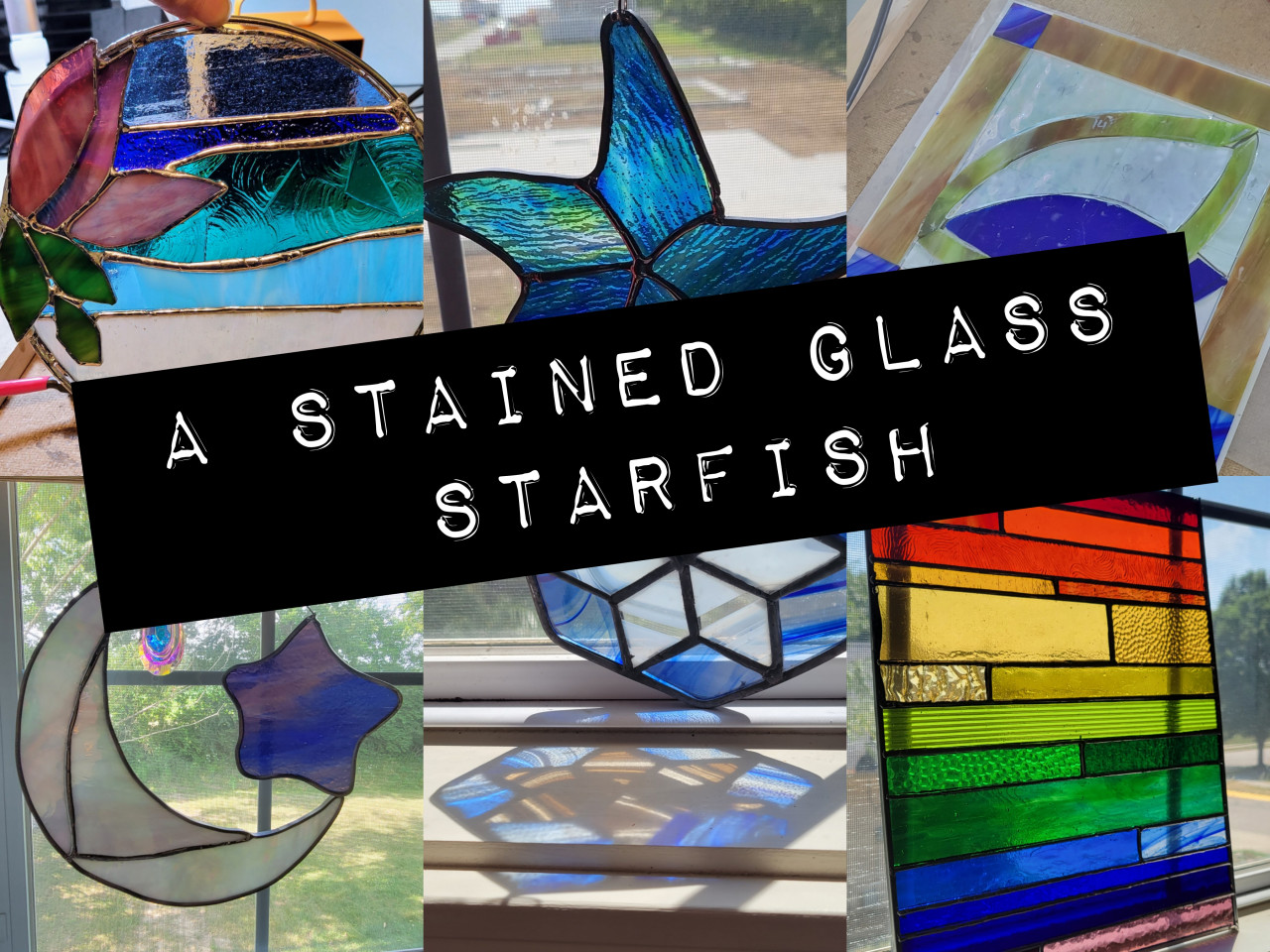One of the most surprising things that happened to me last year was learning how to make stained glass art. By chance, I ran across a video of someone making a suncatcher and I immediately fell in love and bought a beginners kit.
It has been pretty easy to draw parallels between two of my favorite topics: stained glass art and accessibility, especially Augmentative and Alternative Communication (AAC).
Learning only takes place when other people are involved.
Being self-taught is a myth. No one on this planet is “self-taught” because learning takes other people and the environments they design. While I have yet to attend a formal class in stained glass, I’ve benefitted from dozens of knowledgeable people. I’ve learned through the thoughtful design of hundreds of experienced teachers through the environment and tools they created for me. Our students are no different: the support we give and the environments we design are the soil, air, and water to their growing minds. No one learns in a vacuum.
I need a lot of tools.
So many tools! Six of them are for breaking glass in slightly different ways. But that makes sense because just like in AAC ecosystems we’re supporting an environment of creativity and communication and we need lots of tools to do it. We can’t teach someone one tool, even a really great tool, and expect it to work for all situations and times.
Good tools don’t make up for good technique.
Breaking glass is very easy, it’s breaking it the way you want it to break is the difficult part. It takes practice and learning and reflection. In the same vein, predictably I will get at least six phone calls this school year complaining that the communication tool they borrowed from the PATINS library didn’t work for a student, and when asked if they modeled on it and how often, the phone goes silent and we begin the conversation about how students do not learn by osmosis and a good tool doesn’t make up for evidence-based techniques. Every single item in our lending library we provide no-cost support and training so you can hone your skills and maximize your student’s success.
Everyone benefits if we design accessibly.
I choose many of my tools because they were designed for “people with arthritis” or “if you have cataracts.” I have neither, but my own disabilities and preferences, the specialized allow me to make things. Without them, I wouldn’t be able even to try! Providing multiple ways to communicate to and with learners also makes sense, even if they don’t “qualify” or aren’t someone you’d suspect would need that tool or technique.
Forget “go big or go home”: show up and do a little.
I’ve spent most of my adult working life thinking everything had to be in 20-60 minute chunks to “count.” Even when I feel tired and uninterested, I try to spend 5 minutes in my “creative space” even if it’s just cleaning. 5 minutes is perfect to start. Modeling 5 phrases on a device are always better than 0. Spending 5 minutes connecting with a child is always better than none. Not every day can we or our students summit a mountain. Just show up and help make something beautiful. It will matter to at least one.
In honor of that "it matters to this one" mentality, I made a starfish and shared the process. I hope you enjoy it!
Video Description: Jessica Conrad narrates the starfish story while creating a starfish suncatcher. First, she pulls out sheets of blue glass of different colors and textures. Then with a red marker, she writes numbers on each part of a paper pattern of a starfish. Placing a blue-green stained glass sheet on top of the pattern she scores the glass with a glass cutter. Then using running pliers (decorated with googly eyes) she snaps the glass into pieces along the scored line several times breaking it into the desired shape. The pieces are taken to a glass grinder where the edges are smoothed. She then lines the edge of the cut glass with copper foil tape and uses a tiny roller to smooth out the foiled edges. She then lays out all five pieces of her stained-glass starfish onto the table and brushes the coper with flux. With a soldering iron, she applies the solder to the copper and a jump ring to the tip of one of the starfish legs. Finally, the finished star fish spins in the light by a window.




